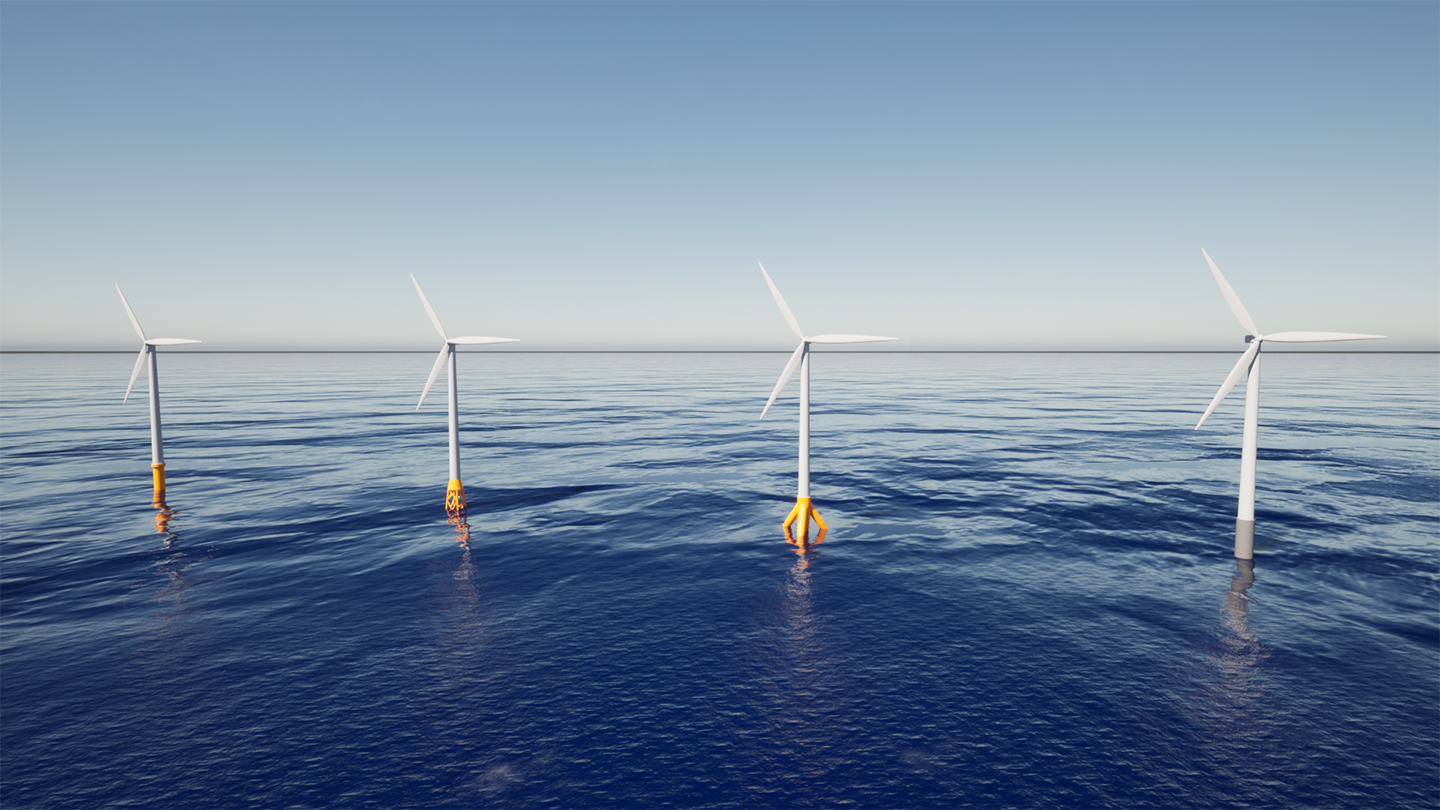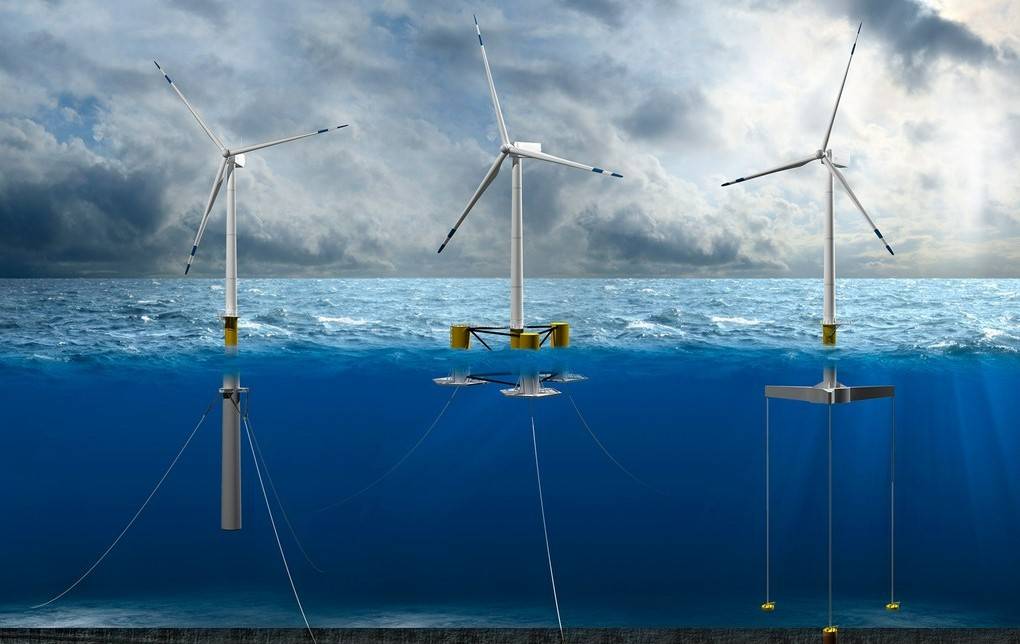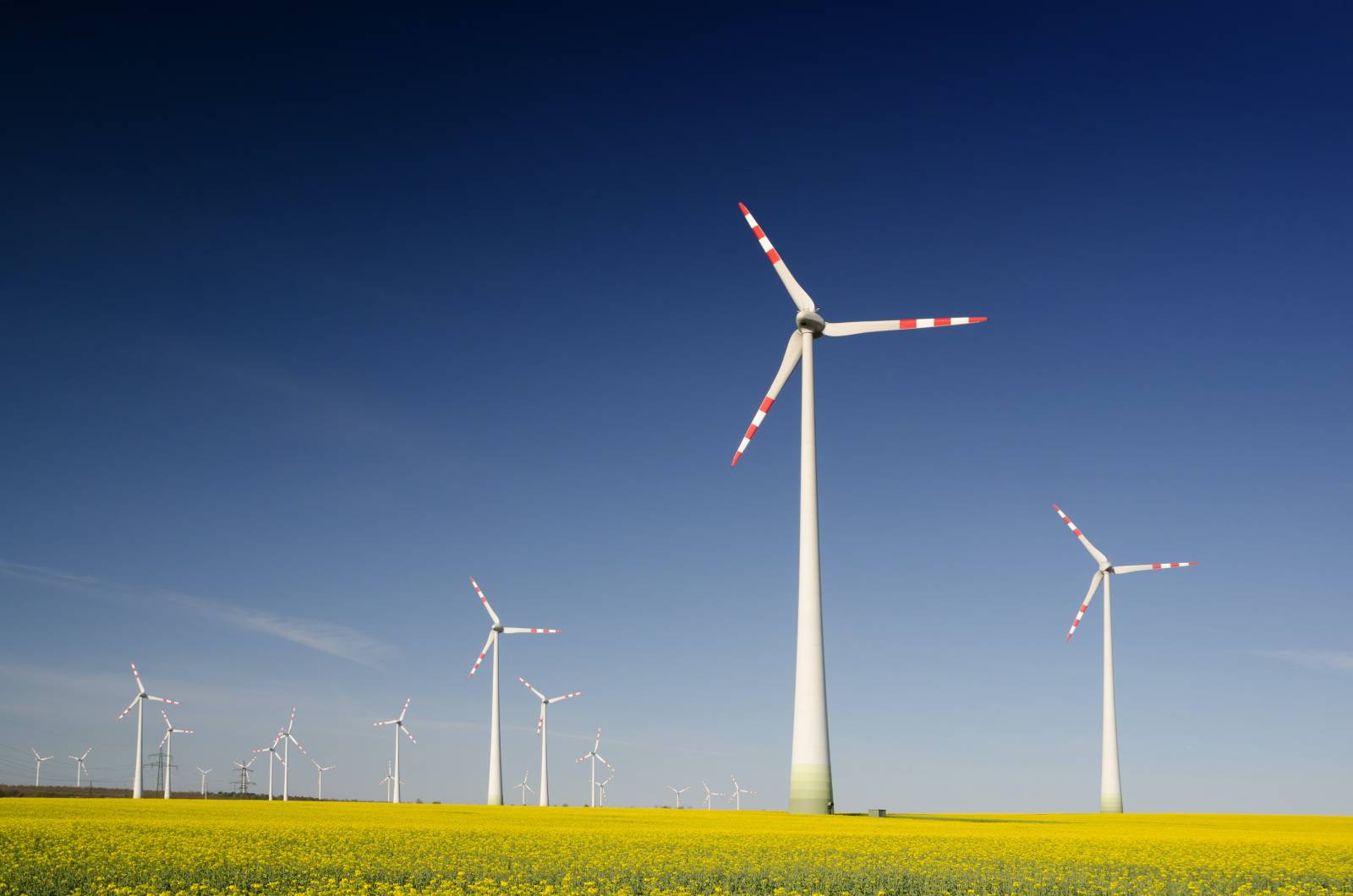Aeroelastic loads calculation
Timeline
2011-2023Sector
Wind EnergyScope
Calculating loads at wind farms and onshore and offshore wind turbinesBACKGROUND
The large number of wind turbines currently installed, and countries' strong commitment to wind power, means that suitable locations for installing wind turbines are becoming both scarcer and more necessary.
Therefore, every new design involves significant financial outlay and human effort in the redesign, analysis and testing aimed at finding the best solution, through a process that encompasses a wide range of disciplines and specialists from different areas.
Wind turbine manufacturers seek to answer wind farm developers on the feasibility of installing a wind turbine model on their site as quickly and as safely as possible.
Very often, wind turbines passed for installation on a wind farm do not work as expected and may have problems such as cracked components, high vibrations or numerous shutdowns that come at a high cost to the developer, either in replacing components damaged before the end of their working lives or through considerable production losses.
Bearing in mind the major investment involved in setting up a wind farm, and the enormous competition between manufacturers, it is extremely important to ensure not only the viability of the wind turbines to be installed but also market-leading performance. That's why projects that have already been sold are re-evaluated in an effort to increase production and/or extend their lives.
SOLUTE works with its engineering teams to develop new configurations that can be adapted to new, different and increasingly more demanding operating scenarios. These engineering teams also work on the feasibility studies needed before a wind farm can be set up under the specific conditions of the onshore or offshore site, as well as conducting reanalysis in the operating and maintenance phases to improve wind turbine performance.
RESULTS
The final result of the process is the aeroelastic model itself, which will be used as a basis for certification of the new wind turbines, and for wind farm validation.
The project feasibility can then be determined, based on all the tables and comparisons, the results reports and the validation documents.
EXPERIENCE
SOLUTE has extensive experience in simulating aeroelastic loads, both for the development of new wind turbine models and for testing existing models under specific onshore and offshore site conditions.
Wind turbines are exposed to the action of the wind, or the wind and the sea, on their structures, which causes a sum of forces and moments on them. This set of forces and moments is called the aeroelastic load.
Using aeroelastic models that define the wind turbine from a structural and aerodynamic point of view, load calculation consists of quantifying the forces and moments to which the structure is subject during its exposure to all wind, sea and operating conditions throughout the working life of the turbine.


METHODOLOGY
Bladed, Flex5, HAWC2 and FAST are calculation codes for creating aeroelastic models that simulate the behaviour of a wind turbine and show its response in the time domain. The theory underpinning all of these codes is blade element momentum theory. Based on the commercial requirements of some manufacturers, SOLUTE has contributed to the translation of models between different codes. This requires a detailed understanding of the formulation and definition with which each code works. With this information, the results obtained with each code can be compared and used to validate the different approaches being studied.
The definition of load cases to be simulated to cover every operating scenario that may occur during the operating life of a wind turbine is established by the IEC 61400-1 and IEC 61400-3 standards.
Creating an aeroelastic model of a wind turbine involves working with the various components that define the turbine, such as the foundations or substructure, the tower, the nacelle and power train, the rotor and the blades. The parameters considered include: the geometric dimensions of each section of the tower and substructure, as well as its mass distribution; characteristic modules of the materials used; the geometric dimensions of the hub and nacelle; the distribution of masses and rigidities; inertia; aerodynamic coefficients; the geometric definition of the blade and the polars of the aerodynamic profiles.
In addition, certain control adjustments are necessary for the development of new wind turbine configurations. This requires verification of the nominal and maximum permitted operating parameters under which the machine must work. Certain global statistical analyses, along with detailed evaluations of specific time series, enable us to determine whether the operation of the control and the machine are adequate or, otherwise, to insist on certain adjustments to achieve these ends.
Along the same lines, natural frequencies are analysed using Campbell diagrams. The existing margins between natural frequencies and excitation frequencies are verified, considering the results as part of the control adjustment in accordance with the modes analysed and the contribution of decoupled modes.
For commercial, manufacturing or logistics reasons, certain redesigns of specific components may be required without the need for a new design of the entire model. For this reason, complete load studies are conducted using the previous base model and these new redesigned components. The ultimate aim is to compare the previous results with the current ones and verify that any newly designed and original components that could be affected by the change continue to fall within the acceptable parameters. Likewise, sensitivity analyses are very often required in reference to certain parameters of the machine.
One of the main aspects to consider as part of the manufacturer’s commercial relationships with its clients is related to the supplied power curve. This requires a large volume of simulations that cover all possible operating scenarios of the machine.
In addition, the load calculation is often required to evaluate whether the product analysed meets the specifications of a specific site. In this case, all the specific characteristics that define the location being studied must be considered. These characteristics include a definition of the wind, a description of the sea conditions if the site is offshore, a description of the terrain for onshore sites, and the layout of the wind turbines within the wind farm to be analysed.
The motivation for these studies is very often related to the wind levels and the characteristics of the air, which define the class for which the machine has been designed. Because the mechanical and structural components that constitute the wind turbine may have higher operating, envelope or acceptance parameters than those considered in the design, numerous analyses are conducted to verify whether there is a certain margin in the components that permits the wind turbine to be installed in the desired location, despite the parameters being outside the range of the design conditions.
Wind files and load cases are prepared and created as part of these types of studies. Wind files primarily contain information about wind speed and turbulence. The load cases or simulations are generated under IEC regulations and take into account the wind, sea and operating conditions. These simulations represent every possible situation that the wind turbine will face in its working life.
Once the load cases have been prepared and simulated, the time series are obtained as a result, i.e. the representation of the loads and operating variables over time. On one hand, the processing of these results consists of counting cycles using the rainflow method to obtain the fatigue results (damage to the structure). On the other hand, it involves calculating the maximum/minimum loads in relation to the latest results.
These post-processes are also carried out under the relevant regulations and quantify the forces and moments that the structure is subjected to during its exposure to all wind, sea and operating conditions throughout the working life of the wind turbine. Immediately after the results are extracted they are evaluated and compared against the reference values with the aim of ensuring the safety and structural integrity of the turbine's components, and its correct operation.
The results are obtained at different points or sensors of the model and end up as a representation of the component that occupies that position. This leads to conclusions about the life span of bolts, bearings, gears etc. as well as the extreme load that the different components will experience. The SOLUTE engineers daily encounter various post-processing tools, as well as calculation and component analysis tools, which require an in-depth understanding of the roles played by equivalent loads, load duration distribution, Markov matrices, utilisation factors and limit loads.
Additionally, trying to extend the working life of the wind turbine further than the time initially planned may be an object of study. It is usual to implement strategies that, on the one hand, allow the wind farm to be built with a certain penalty that can be assumed in the annual energy production and, on the other, enable the working life to be extended with a series of maintenance tasks additional to those planned from the outset. Likewise, the impact on loads that involve changes in control strategy is frequently analysed.
VR
Digital Twins
Virtual replicas of a specific model that reflect their asset with a high degree of accuracy and incorporate data in real time, collected through sensors, to evaluate the performance and implement improvements that can be transferred to the original physical asset they represent.
Solar
Design of solar installation for self-consumption
Estimation of energy production in a self-consumption photovoltaic plant through a correct definition and sizing of the installed equipment to reduce uncertainty and maximise savings.


